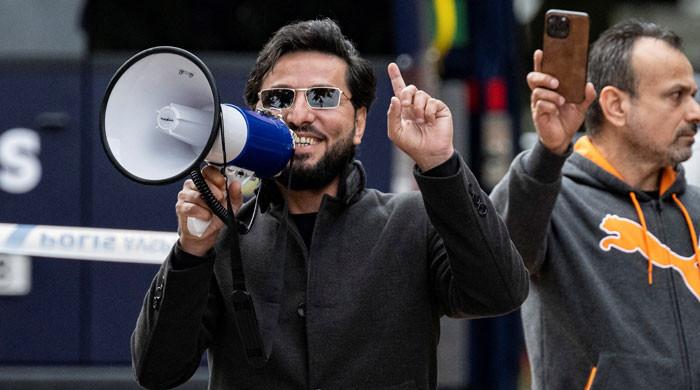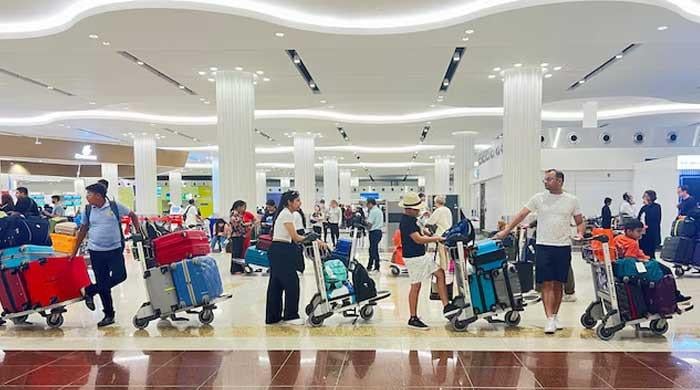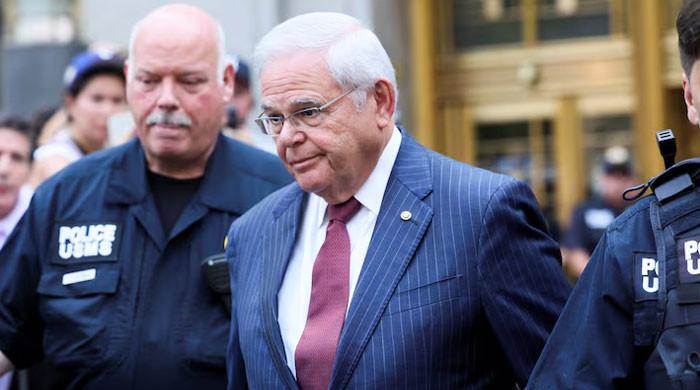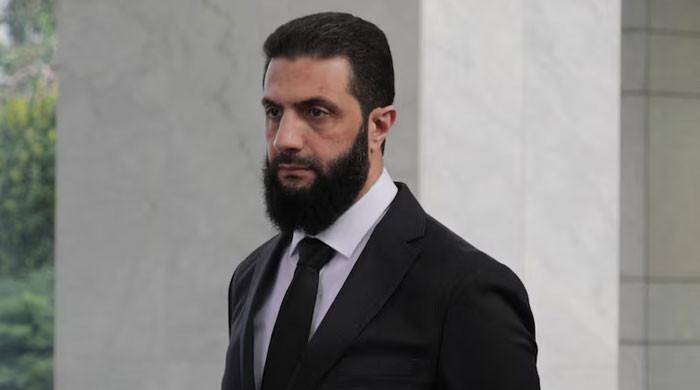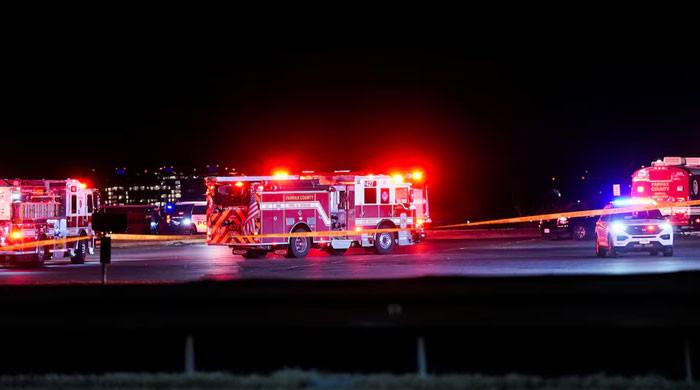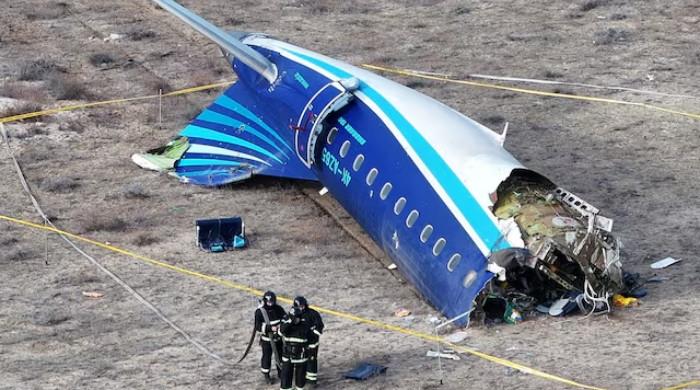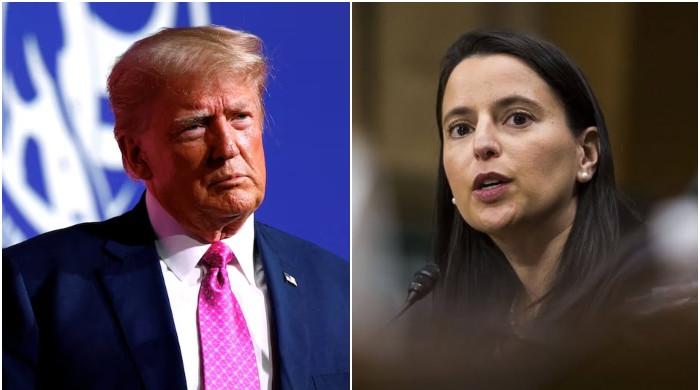Trump announces gradual reopening as US coronavirus death toll passes 32,000
More than 667,800 coronavirus cases have been recorded in the United States
April 17, 2020
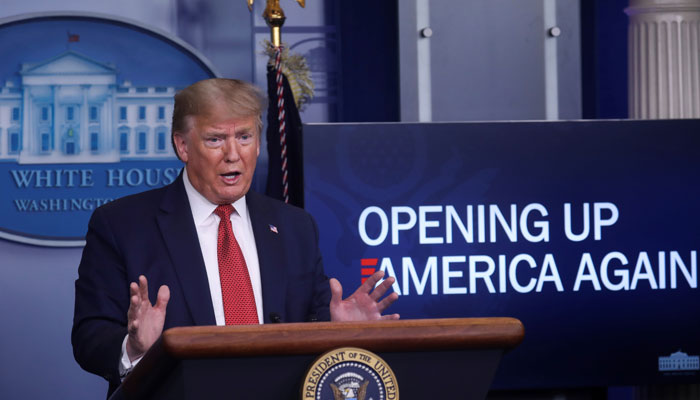
WASHINGTON: US President Donald Trump on Thursday announced the gradual reopening of the economy as the coronavirus death toll in the United States reached 32,917, according to a tally by Johns Hopkins University.
The toll as of 8:30 pm (0030 GMT Friday) marked an increase of 4,491 deaths in the past 24 hours, by far the highest daily toll in the pandemic so far.
But the figure likely includes "probable" deaths related to COVID-19, which were not previously included.
This week, New York City announced it would add 3,778 "probable" coronavirus deaths to its toll.
As of Thursday night, the US Centers for Disease Control and Prevention had recorded 31,071 coronavirus deaths, including 4,141 "probable" virus deaths.
Read also: UK extends lockdown for 'at least' three weeks as coronavirus toll rises
The US has the highest death toll in the world, followed by Italy with 22,170 dead although its population is just a fifth of that of the US.
Spain has recorded 19,130 deaths, followed by France with 17,920.
More than 667,800 coronavirus cases have been recorded in the United States, which has seen a record number of deaths over the past two days.
New York, the epicenter of the country’s COVID-19 epidemic, has suffered more than 12,000 deaths across the state alone.
Gradual reopening
Meanwhile, President Trump unveiled plans Thursday evening to reopen the US economy, allowing each state’s governor "to take a phased deliberate approach to reopening their individual states."
"Based on the latest data, our team of experts now agrees that we can begin the next front in our war," Trump told a news conference. "We’re opening up our country."
His announcement came hours after new data showed job losses from the pandemic fallout in the world’s number one economy had reached 22 million in the past month.
New York Federal Reserve Bank President John Williams warned it will probably take "a year or two," if not longer, for the US economy to recover its strength, as other figures showed dire damage to the home building market and manufacturing.
Read also: Another 5.2m workers lose jobs in US amid coronavirus crisis
Trump had been campaigning for reelection in November largely on record low unemployment and a surge in US output.
So for the Republican, the battle to stop the coronavirus and lift social distancing and the paralysis of entire industries is also a race against the political clock.
However, the recommendations issued from the White House, in conjunction with medical advisors, were a far cry from Trump’s previous hopes for a sudden, widespread end to social distancing measures.
Instead Trump described a cautious approach in which state governors, not the White House, will take the lead -- also a retreat for Trump who had insisted he could dictate the pace of reopening.
"Our approach will outline three phases in restoring our economic life," he said. "We are not opening all at once, but one careful step at a time, and some states, they will be able to open up sooner than others."
Some states, Trump said, are already free from the impact of the coronavirus and therefore can open "literally tomorrow."
If state governors "need to remain closed, we will allow them to do that. If they believe it is time to reopen, we will provide them the freedom and guidance to accomplish that task and very, very quickly, depending on what they want to do," he said.
- Phases but no timeline -
In a White House paper, presented to governors earlier in the day, Trump laid out the plan for getting people gradually back into public venues, but offered no timetable.
Depending on locations and levels of the virus there, people will be able eventually to attend public gatherings and conduct non-essential travel.
But even in the third phase, or what government scientist Deborah Birx called the "new normal," the White House is recommending continued, longterm extra hygiene measures.
There will also be a focus on stamping out any resurgence.
"What’s key to this is early alerts and getting in there before they have a problem," another top government scientist, Anthony Fauci, said.
The caution at the heart of the plan represents a shift of direction for Trump, who from the start of the crisis has shown frustration with the extraordinary disruption and medical staff’s advice to take extreme measures.
Fauci insisted that "the predominant and completely driving element" of the plan remains "safety."
"Light switch on and off is the exact opposite of what you see here," he said.




